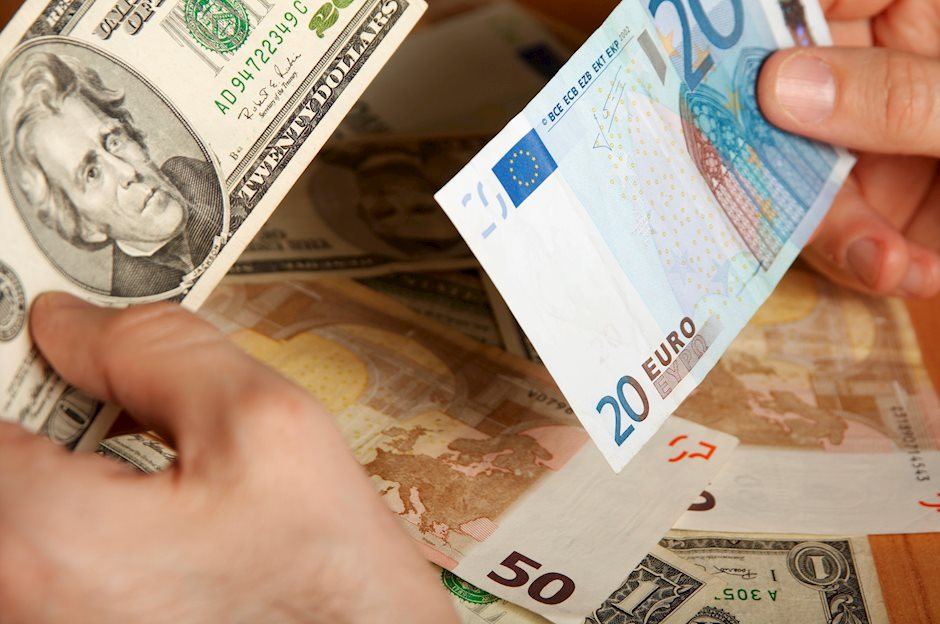EUR/USD hangs near two-month low, seems vulnerable below mid-1.0900s ahead of US CPI
- EUR/USD struggles to attract any meaningful buyers amid a bullish USD.
- The fundamental backdrop seems tilted firmly in favor of bearish traders.
- Investors await the release of the US CPI report before placing fresh bets.

The EUR/USD pair oscillates in a narrow band below mid-1.0900s during the Asian session on Thursday and consolidates the recent heavy losses to a nearly two-month low touched the previous day.
The US Dollar (USD) stands tall near its highest level since August 16 as traders have priced out the possibility of another 50 basis points (bps) interest rate cut by the Federal Reserve (Fed) in November. Moreover, the current market pricing indicates over a 20% chance that the US central bank will keep rates on hold next month and the expectations were reaffirmed by hawkish FOMC minutes released on Wednesday. This keeps the yield on the benchmark 10-year US government bond elevated above the 4% threshold, which should underpin the buck and act as a headwind for the EUR/USD pair.
The shared currency, on the other hand, continues to be weighed down by growing acceptance that the European Central Bank (ECB) will lower borrowing costs by 25 bps at each of the two policy meetings by the year-end. Moreover, the risk of a further escalation of geopolitical tensions in the Middle East should benefit the safe-haven Greenback and suggest that the path of least resistance for the EUR/USD pair is to the downside. Traders, however, might refrain from placing fresh bearish bets and prefer to wait for the latest US inflation figures before positioning for a further depreciating move.
The crucial US Consumer Price Index (CPI) is due for release later during the North American session this Thursday and will be followed by the US Producer Price Index (PPI) on Friday. The data will play a key role in influencing expectations about the Fed's rate-cut path, which, in turn, will drive the USD demand in the near term and provide a fresh directional impetus to the EUR/USD pair.
Euro FAQs
The Euro is the currency for the 19 European Union countries that belong to the Eurozone. It is the second most heavily traded currency in the world behind the US Dollar. In 2022, it accounted for 31% of all foreign exchange transactions, with an average daily turnover of over $2.2 trillion a day. EUR/USD is the most heavily traded currency pair in the world, accounting for an estimated 30% off all transactions, followed by EUR/JPY (4%), EUR/GBP (3%) and EUR/AUD (2%).
The European Central Bank (ECB) in Frankfurt, Germany, is the reserve bank for the Eurozone. The ECB sets interest rates and manages monetary policy. The ECB’s primary mandate is to maintain price stability, which means either controlling inflation or stimulating growth. Its primary tool is the raising or lowering of interest rates. Relatively high interest rates – or the expectation of higher rates – will usually benefit the Euro and vice versa. The ECB Governing Council makes monetary policy decisions at meetings held eight times a year. Decisions are made by heads of the Eurozone national banks and six permanent members, including the President of the ECB, Christine Lagarde.
Eurozone inflation data, measured by the Harmonized Index of Consumer Prices (HICP), is an important econometric for the Euro. If inflation rises more than expected, especially if above the ECB’s 2% target, it obliges the ECB to raise interest rates to bring it back under control. Relatively high interest rates compared to its counterparts will usually benefit the Euro, as it makes the region more attractive as a place for global investors to park their money.
Data releases gauge the health of the economy and can impact on the Euro. Indicators such as GDP, Manufacturing and Services PMIs, employment, and consumer sentiment surveys can all influence the direction of the single currency. A strong economy is good for the Euro. Not only does it attract more foreign investment but it may encourage the ECB to put up interest rates, which will directly strengthen the Euro. Otherwise, if economic data is weak, the Euro is likely to fall. Economic data for the four largest economies in the euro area (Germany, France, Italy and Spain) are especially significant, as they account for 75% of the Eurozone’s economy.
Another significant data release for the Euro is the Trade Balance. This indicator measures the difference between what a country earns from its exports and what it spends on imports over a given period. If a country produces highly sought after exports then its currency will gain in value purely from the extra demand created from foreign buyers seeking to purchase these goods. Therefore, a positive net Trade Balance strengthens a currency and vice versa for a negative balance.
Author

Haresh Menghani
FXStreet
Haresh Menghani is a detail-oriented professional with 10+ years of extensive experience in analysing the global financial markets.

















